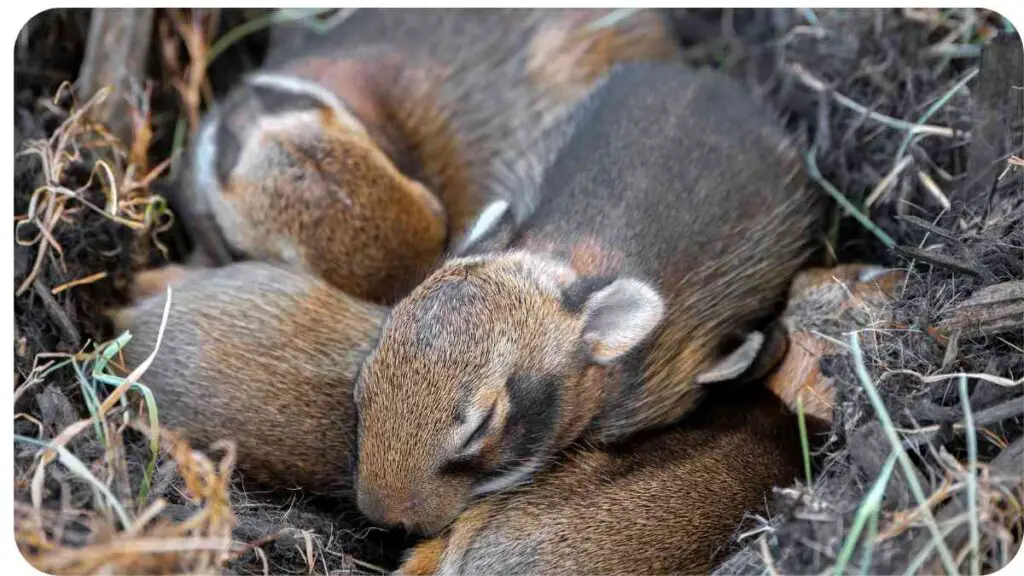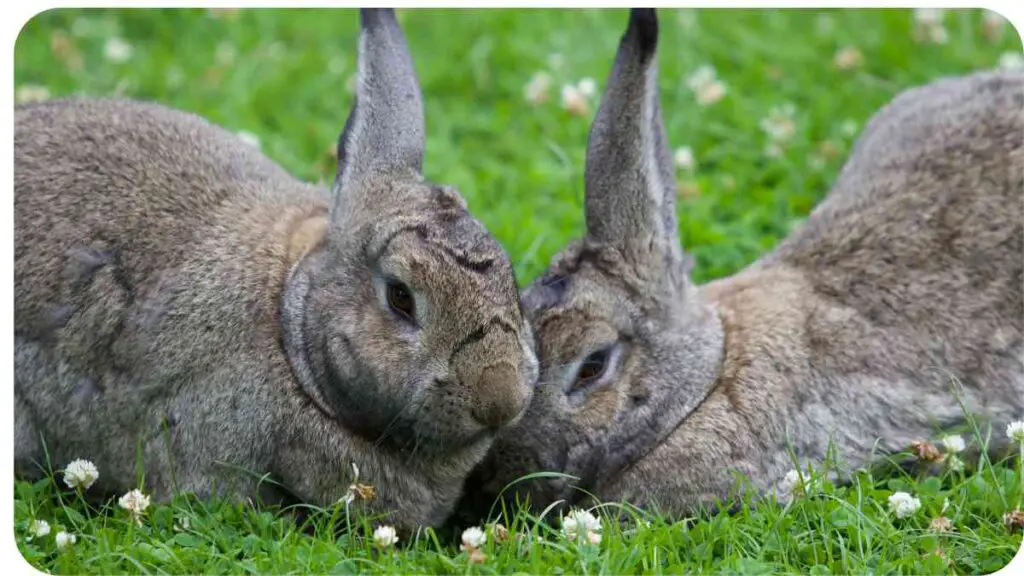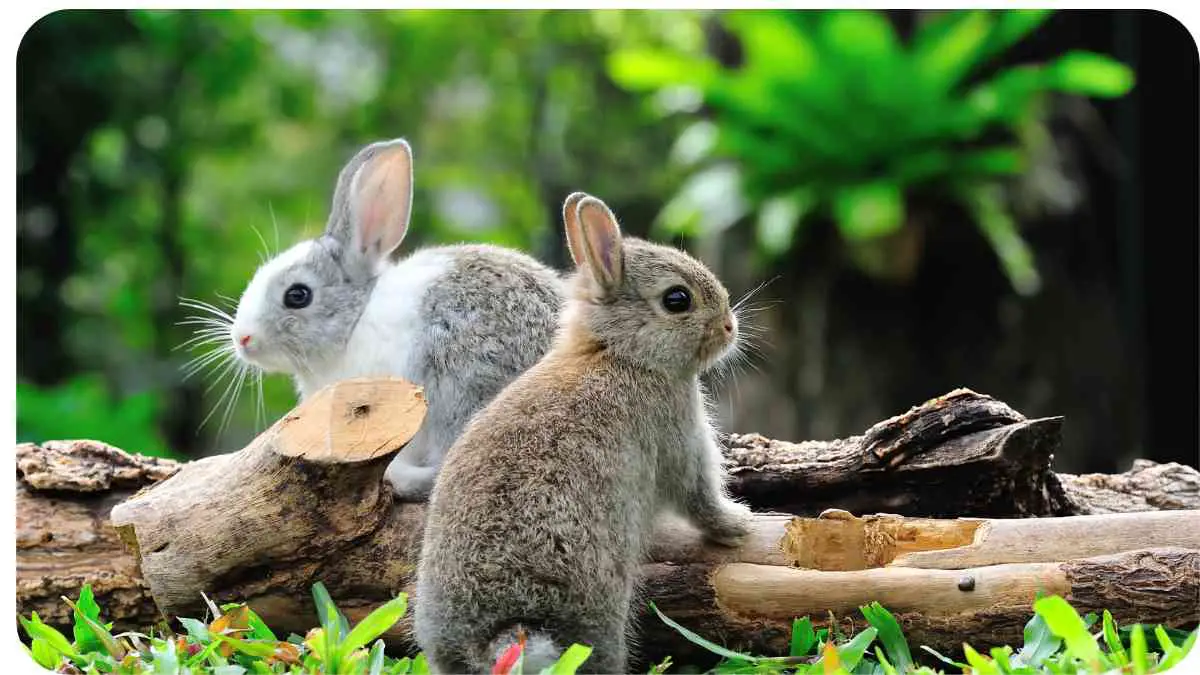Discover essential insights to optimize the care and well-being of your Armenian Marder rabbit. Learn about their optimal breeding conditions, litter size, and nutritional requirements to ensure their health and happiness.
| Takeaways |
|---|
| Armenian Marder rabbits can have a varying litter size, generally ranging from 4 to 8 kits. |
| The gestation period for Armenian Marder rabbits lasts around 28 to 32 days. |
| These rabbits have a breeding frequency of approximately 3 to 4 times per year. |
| Armenian Marder rabbits can make good pets with proper care and a suitable living environment. |
| Providing a balanced diet of fresh hay, pellets, vegetables, and clean water is crucial for their well-being. |
Armenian Marder Rabbit Litter Size Insights

Armenian Marder rabbits, while not prolific breeders, typically have an average litter size of 7-8 kits. Some lines may yield larger litters, up to 6 kits. Successful breeding programs benefit from a balanced female-to-male ratio, promoting fertility. Ensure the health of female rabbits before breeding, as it significantly influences their ability to carry multiple babies simultaneously.
If you’re curious about the litter size of Dutch rabbits, our comprehensive guide on how many babies can Dutch rabbits have provides valuable insights and breed-specific information. Discover the fascinating world of Dutch rabbit reproduction and their adorable offspring.
Enhancing Armenian Marder Rabbit Litter Size
To boost the litter size of Armenian Marder Rabbits, prioritize their diet. Ensure a high-quality, fiber- and protein-rich diet for optimal reproductive health. Ample space is crucial to prevent feelings of overcrowding. Maintain cleanliness and dry conditions to create a favorable environment.
Outdoor exposure is beneficial, aiming for at least four hours of sunlight daily. For indoor-dwelling rabbits, limit daily exposure to around an hour, divided into smaller sessions. If they enjoy occasional outdoor play, restrict it to a total of three hours per week. Quality interaction during these periods is paramount. Lastly, uphold cage cleanliness to minimize stress, contributing to overall improved health outcomes for your pets.
| Strategies |
|---|
| Selecting healthy and genetically robust breeding pairs |
| Providing a balanced and nutritious diet |
| Ensuring optimal living conditions and proper hygiene |
| Minimizing stress and providing a calm environment |
| Consulting with a veterinarian or rabbit expert |
Preparing for Armenian Marder Rabbit Birth
Ensuring a smooth birthing process for your Armenian Marder rabbit involves proactive measures. Firstly, secure a veterinarian ready to provide care during labor. Contact your local vet in advance, confirming their availability on the expected birth day. If they are unavailable, inquire about alternative veterinarians in the vicinity who can assist.
Additionally, consider the age of your rabbit, with an emphasis on youthfulness. It’s advisable for rabbits to be under 3 years old during childbirth, as older ones may face challenges in handling the birthing process as effectively as their younger counterparts. Prioritize both veterinary support and the optimal age for a seamless birthing experience.
Wondering about the litter size of New Zealand White rabbits? Our informative article on how many babies can New Zealand White rabbits have has you covered. Explore the reproductive patterns of this popular rabbit breed and gain a deeper understanding of their adorable litters.
Caring for Armenian Marder Rabbit Babies
Armenian Marder rabbit babies require delicate care due to their fragility, particularly as they are born without fur, making them susceptible to heat loss. Ensure their hutches are well-insulated to maintain warmth, especially during winter months. In colder climates, consider providing sweaters or blankets if temperatures drop below freezing at night.
Sufficient water and nourishment are essential for their growth and health. Newborns benefit from milk replacer formula until they are about 6 weeks old, as they are unable to consume solid foods. Introduce hay around 3-4 weeks of age, enabling them to transition to grass and other greens by 5+ weeks. Prioritize their nutrition and warmth to foster strong, healthy development.
Naming Your Armenian Marder Rabbit’s Offspring:
Choosing names for your Armenian Marder Rabbit’s newborns is an exciting task. Prioritize names that are easy to pronounce and remember, ensuring a seamless interaction for you, family members, and anyone in contact with them. Avoid the confusion that may arise by selecting names that are too similar; distinct names facilitate easy identification.
Steer clear of famous people’s names to avoid potential irony in the long run. Opt for unique, memorable names that reflect the individuality of each adorable bunny. Consider the practicality of names to enhance the joy and connection you share with your Armenian Marder Rabbit’s offspring.
Winter Care for Armenian Marder Rabbit Babies

Ensuring the health of your Armenian Marder rabbit’s babies during winter is crucial, with a focus on preventing hypothermia. Monitoring the temperature in their hutch is paramount. If a thermometer isn’t available, gauge the warmth using your hands. If the hutch feels normal room temperature or warmer, it’s suitable for the bunny babies.
In colder conditions, consider employing heating devices such as electric blankets inside the hutches to maintain a cozy environment. Preventing the risk of hypothermia safeguards the well-being of your Armenian Marder rabbit’s offspring during the winter months.
Discover the litter size of Belgian Hare rabbits with our comprehensive guide on how many babies can Belgian Hare rabbits have. Uncover fascinating facts about this unique breed’s reproduction, and learn more about the size of their litters.
Armenian Marder Rabbit Shedding Insights
Armenian Marder Rabbits are not prone to excessive shedding. Shedding is typically more noticeable during the spring and fall seasons. If you observe abnormal or excessive shedding, consider consulting with your veterinarian or a breed expert for guidance.
Regular brushing is recommended, at least once per week, to prevent shedding from reaching problematic levels. By incorporating this grooming routine, you contribute to maintaining the health and coat condition of your Armenian Marder Rabbit, ensuring their well-being and minimizing shedding-related concerns.
Armenian Marder Rabbit Baby Pricing
The cost of an Armenian Marder Rabbit baby varies based on factors like breed, gender, color, and vaccination status. Typically, a male rabbit may range from $40-$50, while a female rabbit might be priced slightly higher at $40-$60.
Additional considerations, such as the rabbit’s color and whether it has been vaccinated against myxomatosis, can further influence the overall price. When acquiring an Armenian Marder Rabbit baby, it’s essential to factor in these aspects to ensure a comprehensive understanding of the associated costs.
| Seller | Price Range |
|---|---|
| Bunny Haven | $50 – $75 |
| Rabbit World | $60 – $80 |
| Pet Paradise | $70 – $90 |
| Happy Hoppers | $75 – $100 |
| Fluffy Friends | $80 – $120 |
Efficient Cleaning of Armenian Marder Rabbit’s Litter
Cleaning your Armenian Marder rabbit’s litter box is a simple task that requires minimal equipment. Opt for a scoop, available in various sizes and shapes, to effectively sift through the litter and remove waste. Ensure the scoop is adequately sized for your needs to prevent litter spillage.
Investing in an automatic self-cleaning system, like those available on platforms such as Amazon, can be a convenient option for those with time constraints or concerns about the cleaning process. Regular and efficient cleaning practices contribute to maintaining a clean and healthy environment for your furry friend.
Curious about the litter size of Flemish Giant rabbits? Our detailed article on how many babies can Flemish Giant rabbits have provides valuable information about this breed’s reproductive patterns. Dive into the world of Flemish Giant rabbits and their adorable offspring.
Maintaining Clean Armenian Marder Rabbit Hutches
Regular cleaning of your Armenian Marder Rabbit’s hutches is essential for their well-being. Clean the huts when they become dirty or emit unpleasant odors. A dirty hutch can lead to diseases and health issues, potentially jeopardizing your pet’s life and causing discomfort.
Cleaning the litter box involves a few steps. Firstly, remove any solid waste using a scoop or moistened paper towel, ensuring urine is soaked up as much as possible. For thorough cleaning, use a diluted bleach solution (one part chlorine bleach to ten parts water).
Disinfect all surfaces, including corners and crevices where bacteria may accumulate, to prevent the breeding of harmful microorganisms. This not only ensures a clean environment but also helps in controlling unpleasant odors.
| Signs |
|---|
| Foul odor coming from the hutch |
| Accumulation of feces and urine in the bedding |
| Presence of flies or other pests around the hutch |
| Wet or soiled bedding that hasn’t been changed |
| Mold or mildew growth on the hutch or in the bedding |
| Excessive buildup of dirt and debris in the hutch |
| Stained or discolored surfaces |
| Rabbit showing signs of discomfort or respiratory issues |
Recognizing the Happiness of Armenian Marder Rabbit Babies

Observing the behavior of your Armenian Marder rabbit baby provides key insights into its emotional state. Happy rabbit babies exhibit increased activity, vocalization, and maintain an upright stance. Additionally, their ears are likely to be straight up, reflecting contentment.
Conversely, when a rabbit is sad or unwell, you may observe a change in behavior. Signs of sadness often manifest in decreased activity, reduced vocalization, and a drooping of the ears. Monitoring these behavioral cues allows you to gauge the emotional well-being of your Armenian Marder rabbit baby and respond appropriately to its needs.
Indicators of a Healthy Armenian Marder Rabbit Baby
Assessing the well-being of Armenian Marder rabbit babies involves observing their behavior and physical condition. Healthy Armenian Marder babies exhibit:
- Activity and Curiosity: Vibrant and curious exploration of their surroundings.
- Alertness: They are attentive and responsive to their environment.
- Strong Appetite: Displaying enthusiasm and eagerness during feeding.
Be vigilant for any signs of concern, such as:
- Lethargy or Listlessness: Unusual tiredness or lack of energy.
- Disinterest in Food: Lack of appetite or a reluctance to eat.
- Abnormal Bowel Movements: Irregularities in their digestive patterns.
Regular monitoring of these aspects allows you to promptly identify and address any potential health issues, ensuring the ongoing health and happiness of your Armenian Marder rabbit babies. If in doubt, consult with a veterinarian for professional guidance.
Interested in learning about the litter size of Miniature Lion Lop rabbits? Our comprehensive guide on how many babies can Miniature Lion Lop rabbits have has all the answers. Discover fascinating facts about this delightful breed’s reproduction and gain insights into the size of their litters.
Conclusion
In this comprehensive guide, we’ve addressed key aspects of caring for Armenian Marder Rabbits, from their reproduction to health indicators. We trust this information has been valuable in nurturing a strong, happy, and healthy bond with your furry companions.
Should any queries linger, feel free to share them in the comments below. Your dedication to understanding and providing optimal care for Armenian Marder Rabbits contributes to their well-being and enriches the joy of rabbit companionship. Happy rabbit keeping!
Further Reading
Here are some additional resources for further reading on Armenian Marder rabbits:
Armenian Marder Rabbit Adopts: Explore this DeviantArt page showcasing Armenian Marder Rabbit adopts and enjoy the adorable artwork depicting these rabbits.
Armenian Marder Rabbit: Learn more about the Armenian Marder Rabbit breed, their characteristics, and care requirements with this informative article from Farming Plan.
Rabbit – A-Z Animals: Visit A-Z Animals to delve into their rabbit species profile, which provides general information about rabbits, their behavior, and habitats.
FAQs
Here are some frequently asked questions (FAQs) related to Armenian Marder rabbits:
What is the average litter size of Armenian Marder rabbits?
The average litter size of Armenian Marder rabbits can vary, but it generally ranges from 4 to 8 kits.
What is the gestation period for Armenian Marder rabbits?
The gestation period for Armenian Marder rabbits typically lasts around 28 to 32 days.
How often do Armenian Marder rabbits breed?
Armenian Marder rabbits have a breeding frequency of approximately 3 to 4 times per year.
Are Armenian Marder rabbits good as pets?
Armenian Marder rabbits can make good pets, but they require proper care, attention, and a suitable living environment.
What are the recommended diet and nutrition for Armenian Marder rabbits?
The recommended diet for Armenian Marder rabbits consists of fresh hay, high-quality pellets, fresh vegetables, and access to clean water. A balanced and nutritious diet is essential for their well-being.

I’m Dr. Hellen James, a professional veterinarian with a deep interest in the ways that litter size affects the health of animals. I’ve spent years studying this subject and performing research on reproduction in many different kinds of creatures.


